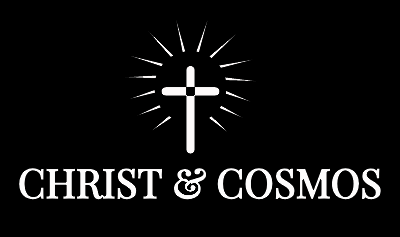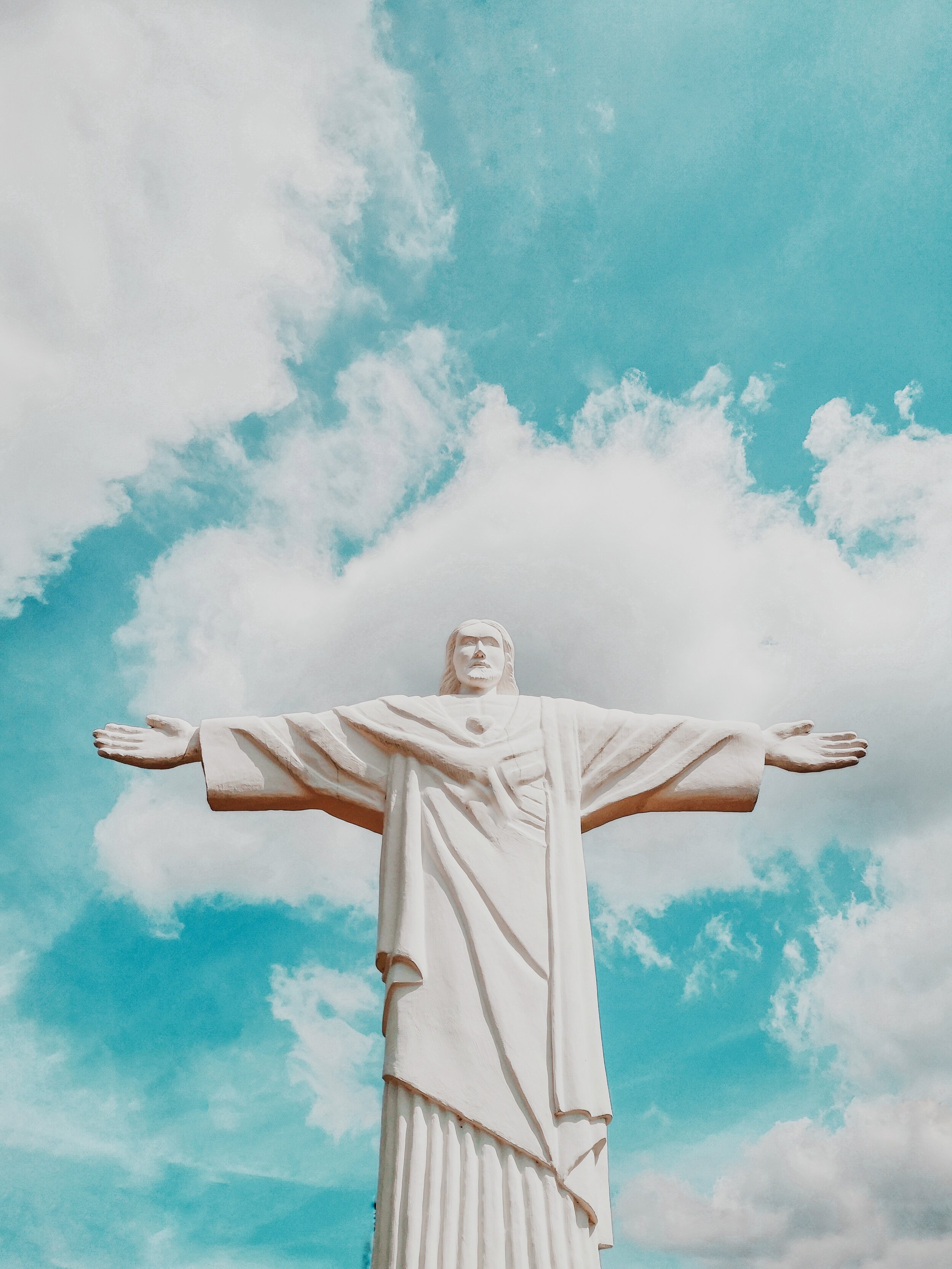ST. MAXIMUS CONFESSOR, VISIONARY OF THE COSMIC CHRIST: A CRASH COURSE
I want to start this post by apologizing to Christ and Cosmos’s faithful readers for the lack of content these last two months. I have recently been swamped with PhD applications, family illness, the holidays - and, on top of that, my PC broke down! Now, however, both PhD applications and the holidays are finished, and a new laptop is coming in the mail, so you can expect me to be updating regularly once again. Stay tuned in the coming months for more blog posts, our first podcasts (!), and a brand new item that I look forward to showing you all. Until then, please enjoy this post, which I wrote a few months ago, but never released. It is a very brief introduction to one of my favorite theologians, and my favorite church father of all time: Saint Maximus the Confessor.
Most Western Christians do not know the name Maximus Confessor. This is a shame, since this great church father was pivotal to the development of orthodoxy. It was he who saw why we must believe that Christ not only has two natures – one divine, one human, united hypostatically – but that Christ also has two wills (in Greek, energeia).
This assertion might seem shocking: how could Christ, who is emphatically one person, have two wills? But the Church, in the Sixth Ecumenical Council, affirmed that this was orthodox teaching – and it did this following Maximus’ teachings.
AT THE GARDEN OF GETHSEMANE
This seems crazy – until you think about the Garden of Gethsemane. There, we see Jesus anxious, on his knees, face tipped toward heaven, bloody sweat smeared on his brow; and we see Him praying to the Father, pleading with Him, asking that this cup – condemnation, scourging, torture, and slow death, with the weight of the world’s sins upon Him – might pass.
It is a harrowing image. But if we remove ourselves from the moment, from our immediate affective love for the Lord, we begin to see something else that disturbs us. For this is Jesus Christ petitioning God to change His plan for Him.
This a problem because Jesus Christ Himself is God. The problem is not that Jesus prays to His Father – for in His humanity He must pray to God constantly. The problem is that Jesus, praying in His humanity, has willfully requested that His Father change His Divine will for Jesus’ life. If Jesus is indeed God, then this means that God is willfully desiring that God’s will might not happen for Him.
If this sounds confusing, or paradoxical, that’s because it is. For God has one will, and He cannot contradict Himself. But here God seems to have two wills, each contradicting the other! Something else must be going on here.
A HIDDEN INSIGHT FROM CHALCEDON
The answer to this problem, as it turns out, is already embedded in the Christology of Chalcedon (the Fourth Ecumenical Council). For according to that council, Jesus has both human and divine natures.
And here’s the thing about this formula: in its classical sense, a nature must fulfill its purpose in order to truly be itself. Or to use ancient language: it must grow into a perfection proper to itself. This means that for humans, as with anything else, having a fulfilled nature requires being in perfect accord with one’s purpose. That is “nature” in its most proper sense.
What, then, is the human’s purpose? Worship of, communion with, obedience to God. But for humanity, as for God, doing these things is a matter of will. We must will our purpose, our good, in order to fulfill our nature. And yet, as Christians know, the Fall has corrupted our nature.
As Augustine and other saints note, when the Fall corrupted our nature, it also corrupted our will. This is because the two corruptions are interrelated, as we can now see. Corruption of our will makes us incapable of perfect obedience to God. It removes us from divine communion. It corrupts our nature.
But Jesus was born without corruption, without sin – He has a perfect human nature, in perfect communion with God. But for that to be so – for Him to have a perfect human nature – He must have a perfect human will. Jesus Christ, God-man incarnate, must have both a human will and a divine will – and they must be in perfect harmony. Otherwise, Jesus is not fully human.
This is what happens in the Garden of Gethsemane. God in His humanity wills that God in His divinity might let this cup pass – but ultimately He (Jesus) acts in perfect obedience to the Divine will. This was Maximus’ great discovery; and it made Him one of the great architects of the doctrine of Christ.
THE CHRIST-CENTERED COSMOS
This was Maximus’ great contribution to church teaching; but his contributions to Christian orthodoxy hardly end there. For Maximus has also bequeathed to the Church the grand vision of a Christocentric cosmos. His Christology is not just there to sort out the more difficult intricacies of dogmatics; it is also the heart of a broader system in which God reunites the whole universe with Himself.
At the heart of Maximus’ thought is the notion of gathering, and Christ as the gatherer of the cosmos. For Maximus, Christ is the purpose and end of Creation, foreordained before the world began. Christ is not only the perfection of human nature; he is also the purpose, end and perfection of all natures – that is, of the whole natural world. As God’s Wisdom or Logos, the whole natural order culminates in Him.
The simplest way of explaining this complex concept is to say that the Logos is the rational principle of all things, and as such is their purpose and end. This is certainly the most important aspect of the Logos for Maximus.
This Logos, which John identifies with the Son in His gospel (“the Logos became flesh…”) – this is a sort of Ur-principle, the One Reason which gathers together all the other reasons, all the other purposes and ends of the world. These other reasons, purposes, ends, Maximus calls logoi. You can think of the logoi as the reasons for the various natures of things (including we humans!). The logoi are gathered up into the Logos in eternity.
Christ is in all things as the height of Creation because He is the Logos incarnate, who gathers all logoi together.
GATHERING IN THE GAZE OF LOVE
Does this claim that Christ is Creation’s high point mean that humanity is the end of Creation? It does, but in an unusual sense. Maximus does not speak of we humans as an end because we are at the top of a natural hierarchy; rather, he speaks of us as an end because we are capable of mystical contemplation.
It turns out that we humans, when we contemplate the world, taking it in through a gaze of love and compassion, taking it in such that Christ is our focus, such that we can see Him in all things – it turns out that, when we do this, we are reflecting an eternal, metaphysical reality. We are seeing that the reason for the purpose of each thing we see is ultimately gathered up in the Logos (i.e., the Son) of God.
Because we can do this, we humans are the culmination of Creation. Through our rational faculties and our contemplative gaze, we are able to discern the reasons of the natural order and see how they gather into Christ – that is, into the Logos who became incarnate. We can do this in and through Christ, whose divine grace moves our will to see and think this way – and to act accordingly.
In so doing, we gather the myriad creatures of the world and lift them up unto Christ in a sacrifice of praise. In so doing, we not only become sanctified – and deified – ourselves; we also sanctify and deify the creatures we gather unto Christ. We, as microcosms of the universe, hold all things together as their mediators, as gatherers who know that they and we are one with God.
This gathering is the purpose of human life. And this purpose is exemplified, centered, and fulfilled in Jesus Christ, God become man. This is Maximus Confessor’s vision.
DAN TATE is a writer and blogger at Christ & Cosmos. A former atheist, he’s been surprised and amazed by the God of all things, and he’s passionate about sharing the gospel in ways that respond to contemporary concerns about theology, philosophy, spiritual practice, science, art, and more. A lifelong writer hailing from Upstate New York, he has a B.A. from Allegheny College, an M.A. from Syracuse University, and an M. Div. from Princeton Theological Seminary.






